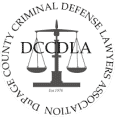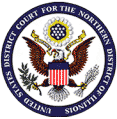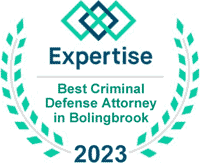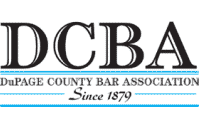Eyewitness Identification of Suspects Compelling, but Often Flawed
Time and time again, eyewitness identification proves to be a potent tool in convincing jurors of a defendant’s guilt. Indeed, an unwavering, credible witness can erase doubt from the minds of almost everyone involved in the administration of justice.
There is just one problem: much of the time, eyewitnesses are wrong. Each year, well over 75,000 eyewitnesses identify suspects during the course of criminal investigations. An enormous body of research suggests that about a third of those are misidentifications; some studies put the proportion of misidentifications even higher.
For the first time in over 30 years, the U.S. Supreme Court will reevaluate the Constitution’s take on eyewitness evidence. Even though the legal issues presented in the case are unlikely to cut substantively into the evolving scientific understanding of human memory, the Court’s willingness to take a case involving eyewitness unreliability has fueled a growing perception that reform is needed in the process of identifying suspects. Some jurisdictions have already acted on this sentiment, while in others the services of a skilled Naperville criminal defense lawyer are the only thing standing in the way of a wrongful conviction.
Why Mistaken Identification Occurs
Out of the first 250 convicted defendants later exonerated by the advent of DNA technology, 190 were put behind bars with the help of eyewitnesses who were wrong. There are three scientific grounds on which eyewitness identification may be questioned: poor visibility conditions, the fact that humans are generally poor at facial recognition and suggestive identification procedures.
Poor Visibility
Imperfect visibility conditions are perhaps the most easily understood reason why witnesses may make a mistake; perhaps there was low lighting, stormy weather, threats or a weapon, or only an opportunity for a brief glance at a suspect’s face. Yet, one study found that even when a key witness’s testimony is impeached (discredited) by the introduction of evidence showing poor visibility, guilty verdicts drop by just four percent.
Difficulties in Facial Recognition
People’s ineffectiveness at remembering the faces of strangers was demonstrated in a study headed by noted criminal justice physiologist Dr. Steven Penrod. In the study, individuals entered a convenience store under ideal visibility conditions and did something unusual to draw the clerk’s attention. When clerks were later asked to pick the “customers” out of a photo lineup, less than half made a correct identification, and more than a third actively stood behind false identifications. Related research has produced similar results. Psychological evidence that more than one in three eyewitnesses is wrong rarely holds much sway with jurors.
Suggestive Identification Procedures
Biased identification procedures tend to receive more judicial scrutiny than other factors in witness unreliability. Mistaken identification based on the conduct of law enforcement strikes a bolder note of unfairness than that grounded in human nature. Several identification scenarios have been found to call witness accuracy into question. Overly suggestive identification procedures may include:
- A photographic line-up where witnesses tend to choose the “best” picture or individual compared to the others rather than conducting a series of independent evaluations.
- A witness may not be told the perpetrator is not included in the lineup, or may be shown a lineup in which “distracters” are too physically dissimilar from the suspect, thus steering the identification in one direction.
- The person conducting the lineup may know who the suspect is and he or she may influence the identification, unintentionally or otherwise.
Whatever the reason for incorrect identification, eyewitnesses tend to become more confident in their identification as time passes. Confident eyewitness testimony has consistently proven to be incredibly persuasive to jurors.
Supreme Court Takes a New Look at Eyewitness Identification
The case Perry v. New Hampshire will focus on the trial judge’s role in screening testimony about eyewitness identification for reliability before it is presented to a jury. Many courts have held that due process requires judges to determine whether an out-of-court identification and any subsequent in-court identification are reliable only when suggestive circumstances were orchestrated by the police (e.g., when the police presented a lineup in which all distracters were very physically dissimilar from the known suspect). Some courts, however, have decided that judicial review is required for all identifications made under circumstances that call reliability into question, whether the police had a role in creating those circumstances or not. Perry v. New Hampshire will settle this discord.
What the case likely will not do is delve into exactly what the trial judge’s reliability determination should look like, or address broader questions about the general untrustworthiness of eyewitness identification. While many legal experts are disappointed that the Supreme Court has declined to tackle these more difficult issues, it is seen as a good sign that the Court has finally decided to accept an eyewitness identification case after nearly three and a half decades of silence on the subject.
Other Measures to Combat Incorrect Identification
While a new ruling on eyewitness identification from the Supreme Court is a step in the right direction, some jurisdictions are not waiting on the nation’s highest court to implement better suspect identification practices. As mentioned, certain courts already require judicial review and suppression of unduly suggestive identification evidence. In addition, measures are being taken to reform the identification process itself: blind administration (where the officer administering the lineup is unaware of who the suspect is), better lineup composition, telling the witness that the perpetrator may not be in the lineup, and having the eyewitness give a recorded statement of confidence immediately following the identification can all help.
Testing evidence in a court of law remains the final safeguard against eyewitness misidentification. A skilled defense attorney can help expose identifications made under less than ideal circumstances. If you have been charged with a crime, do not let your freedom be put in jeopardy by mistaken identity. Contact an experienced criminal defense lawyer today.














